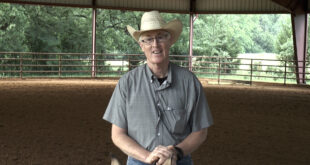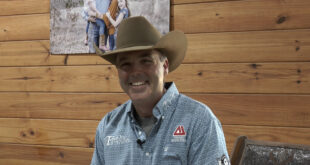
Purchasing proper hay is a critical management technique that horse owners should master for not only their horse’s wellness but also for their budget’s health.
A practical guide to hay cuttings, types, and quality.
Horse owners know that forage is an important part of their horse’s diet–it provides nutrients and essential fiber for hindgut health. When management practices restrict a horse’s access to fresh pasture, or when a horse needs more nutrients than pasture can provide, hay is a popular forage alternative. But how do horse owners assess all of the hay options and make the right decision for their horse’s needs, while getting their money’s worth?
Hay Types
Horses consume grass, legume, and cereal hay varieties. Hay species and availability vary drastically depending on region, and -local hays are representative of the climate in which they were grown and harvested.
Grass types are divided into two categories based on their optimal growing climate: cool or warm season. Cool-season grasses include species such as orchardgrass, tall fescue, timothy, bromegrass, and bluegrass. They grow mainly in areas that experience warm days and cool nights. Warm-season grasses, such as Bermuda grass, big bluestem, and teff, thrive in climates characterized by hot days and warm nights. Warm-season grasses have become more popular due to their high yielding -capabilities, palatability, low levels of nonstructural carbohydrates (consuming high levels of these sugars and starches can lead to conditions such as insulin resistance), and nutrient content and digestibility that are similar to some cool-season varieties. However, warm-season grasses will not overwinter (survive) in northern climates, and their high fiber fractions can potentially lead to colic.
Legumes and cool-season grasses require similar growing conditions, so you generally see them growing in the same areas. Alfalfa is the most common legume owners feed their horses, and a large majority of the hay grown in the United States is alfalfa or a grass-alfalfa mix. Other legume species include clovers such as red, white, alsike, ladino, and birdsfoot trefoil.
Cereal grain hays, such as oat, barley, and wheat, are used less commonly in equine diets. “The ideal cereal grain hay is one cut at a leafy stage, when the seedhead has not yet emerged,” says Ray Smith, PhD, forage extension specialist at the University of Kentucky. “This hay will have good protein and digestibility and will be readily consumed by horses. When cereal grain hay is harvested with seedheads fully extended, then the main nutrients are in the actual grain and the rest of the hay is really just straw and typically low-quality.”
Use caution when feeding cereal hays to horses with polysaccharide storage myopathy, metabolic syndrome, Cushing’s disease, or sugar and starch sensitivities, due to these forages’ high carbohydrate content.
The Difference in Cuttings
The time at which hay plants are harvested, or their maturity, is the most important variable for estimating nutritive value. Usually, if it was harvested properly, the season’s first hay cutting offers the most nutrients. This immature hay often has a soft texture and is very leafy and palatable. Farmers harvesting plants in early maturity cut them soon after the seed heads emerge (for grasses) or before the plant begins to bloom (for legumes). Plants harvested in late maturity have coarse, thick stems and fewer leaves than plants harvested in early maturity. The older the plant at harvest, the lower its nutrient value and palatability. More mature hay is still a good choice for some horses, however, including adult idle horses or easy keepers.
Let’s Talk Shape
Once harvested and dried, farmers can bale forage in square or round bales. The small square bale is the most common form, weighing approximately 45-100 pounds, notes Lon D. Lewis, DVM, PhD, Dipl. ACVN, in his Equine Clinical Nutrition: Feeding and Care. These square bales are easy to transport, feed, and store. Large round or square bales are another option, but their 500-2,000-pound weight can make them difficult to handle, and feeding these bales results in the greatest wastage. Also due to their large size, if moisture levels are high at time of baling, these bales are more likely to harbor growth of a particular bacterium that releases a toxin capable of causing the fatal disease botulism. Moisture should not exceed 20%, according to the University of California Agriculture and Natural Resources alfalfa management guide.
Hay cubes are yet another form of hay, compressed to about 1 ¼-inch squares. Lewis writes that hay cubes are easy to transport, they take up less storage space than hay, produce minimal dust, and horse owners generally find there’s less waste with these products. However, researchers have found that horses do tend to eat hay cubes faster than they do baled hay, which might increase their risk for choke or undesirable behaviors such as wood chewing or cribbing, as reported in a study by Haenlein et al. Hay cubes can also be more expensive than baled hay.
Determining Hay Quality
Hay quality is defined by the hay’s nutritional value, which varies depending on plant species. In an ideal world, all hay would be tested for nutrient composition and digestibility using chemical analysis. The resulting report is helpful for balancing your horse’s ration as well as analyzing cost.
If it is not possible to perform a nutrient analysis of your hay or hay you’re thinking about purchasing, then inspect it visually. Lewis cautions, however, that a visual inspection serves only to evaluate hay for quality and not nutritional value. He lists five basic criteria horse owners should look for prior to purchase:
- Hay free from dust, mold, and foreign objects. Horses’ natural grazing behavior is selective–they choose the most palatable and immature plants to consume first. Therefore, they naturally rummage through to find the best bite. When horses sift through moldy or dusty hay, those irritants are released into the air and, when inhaled, can negatively impact a horse’s respiratory system (i.e., heaves). Foreign objects such as weeds, insects, and twine can also potentially harm a horse if ingested.
- A high leaf-to-stem ratio. Smith says horse owners should “carefully inspect hay before buying and choose hay lots that contain a high proportion of leaves vs. stems and seed heads,” because the plant’s highest concentration of nutrients is in its leaves.
- Hay soft to the touch.
- A pleasant smell.
- A bright green color.
Generally avoid any hay that does not meet these criteria.
Choosing the Right Hay
Any nutritionist will tell you that your biggest cost savings step is to maximize forage use in your horse’s diet. We know horses require fiber for optimal digestive health, so why not get the most out of the hay you already plan to feed?
Try to choose hay that is considered good quality for all classes of horses upon visual inspection. From there, horse owners must match the most nutritious hay to their horse’s purpose. A horse’s nutritional needs depend on his physiological class, such as maintenance, reproduction, growth, or performance.
The class with the lowest nutrient requirements are idle, mature horses. Good-quality grass-type hay cut at early or mid-maturity can meet this type of horse’s requirements when fed in adequate amounts. Pregnant and lactating mares and high level performance horses represent the top plane of nutrition of all classes. Therefore, horse owners should consider feeding a legume or legume-grass mixed hay to provide these horses with adequate nutrition. In some cases a horse’s nutritional needs will be higher than what can be provided with forage. For these horses feed a commercial grain mix to properly balance the diet, and consult with an equine nutritionist for further advice.
Take-Home Message
Purchasing proper hay is a critical management technique that horse owners should master for not only their horse’s wellness but also for their budget’s health. Although hay analysis is the most accurate method to determine hay quality, horse owners aren’t always able to access it. In those cases they can perform a visual inspection prior to purchasing hay, examining it for cleanliness, high leaf-to-stem ratio, pleasant aroma, softness, and bright color. Finally, horse owners should be aware of their horse’s nutrient requirements and match those to the best quality hay produced from appropriate plants species.
Source: thehorse.com
 Virtual Horse Help and Worldwide Slide Horse Training Videos, Show Coverage, Features, Behind-the-Scenes & Bi-Weekly E-Neewsletters
Virtual Horse Help and Worldwide Slide Horse Training Videos, Show Coverage, Features, Behind-the-Scenes & Bi-Weekly E-Neewsletters








